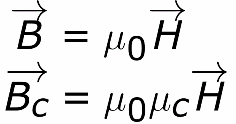Electromagnetic field strength
When talking about the electromagnetic field, they usually mean the magnetic field of electric currents, actually — the magnetic field of moving charges or radio waves. In practice, the electromagnetic field is the resulting field of force that is due to exist in the region of space under consideration electric and magnetic fields.
Each of the components of the electromagnetic field (electric and magnetic) affects charges in different ways. An electric field acts on both stationary and moving charges, while a magnetic field acts only on moving charges (electric currents).
In fact, it is easy to understand that during a magnetic interaction the magnetic fields interact (for example, an external magnetic field whose source is not specified but whose induction is known and the magnetic field generated by a moving charge), and during electric interaction electric fields interact—an external electric field, the source of which is not specified, and the electric field of the charge in question.
For convenience in finding forces using the mathematical apparatus, in classical physics, concepts of electric field strength E and magnetic field induction B, as well as related to the induction of the magnetic field and to the properties of the magnetic medium, an auxiliary quantity, the magnetic field strength H… Consider these vector physical quantities separately and at the same time understand their physical meaning.

The electric field strength E
If an electric field exists at a certain point in space, then a force F proportional to the strength of the electric field E and the magnitude of the charge q will act on the electric charge placed at that point on the side of this field. If the parameters of the source of the external electric field are not known, then, knowing q and F, one can find the magnitude and direction of the electric field strength vector E at a given point in space, without thinking about who the source of this electric field.
If the electric field is constant and uniform, then the direction of action of the force from its side on the charge does not depend on the speed and direction of movement of the charge relative to the electric field, and therefore does not change, regardless of whether the charge is stationary or moving. Electric field strength in NE measured in V / m (volts per meter).

Magnetic field induction B
If a magnetic field exists at a given point in space, then no action will be exerted on a stationary electric charge placed at that point on the side of that field.
If the charge q goes into motion, then the force F will arise on the side of the magnetic field and it will depend both on the magnitude of the charge q and on the direction and speed v of its motion relative to this field and on the magnitude and direction of the magnetic field vector induction B of given magnetic fields.
Thus, if the parameters of the source of the magnetic field are not known, then knowing the force F, the magnitude of the charge q and its velocity v, the magnitude and direction of the magnetic induction vector B at a given field point can be found.
So, even if the magnetic field is constant and uniform, then the direction of action of the force on its side will depend on the speed and direction of movement of the charge relative to the magnetic field. Magnetic field induction in the SI system is measured in T (Tesla).

The strength of the magnetic field H
It is known that a magnetic field is generated by moving electric charges, that is, currents. Magnetic field induction is related to currents. If the process takes place in a vacuum, then this relationship for a chosen point in space can be expressed in terms of the magnetic permeability of the vacuum.
For a better understanding of the relationship magnetic induction B and the strength of the magnetic field H, consider this example: the magnetic induction in the center of a coil with a current I without a core will differ from the magnetic induction in the center of the same coil with the same current I, only with a ferromagnetic core placed in it.
The quantitative difference in the magnetic inductions with and without a core (at the same magnetic field strength H) will be equal to the difference in the magnetic permeabilities of the material of the introduced core and the vacuum. The SI magnetic field is measured in A/m.

The combined action of electric and magnetic fields (Lorentz force) and magnetic fields. This total force is called the Lorentz force.


